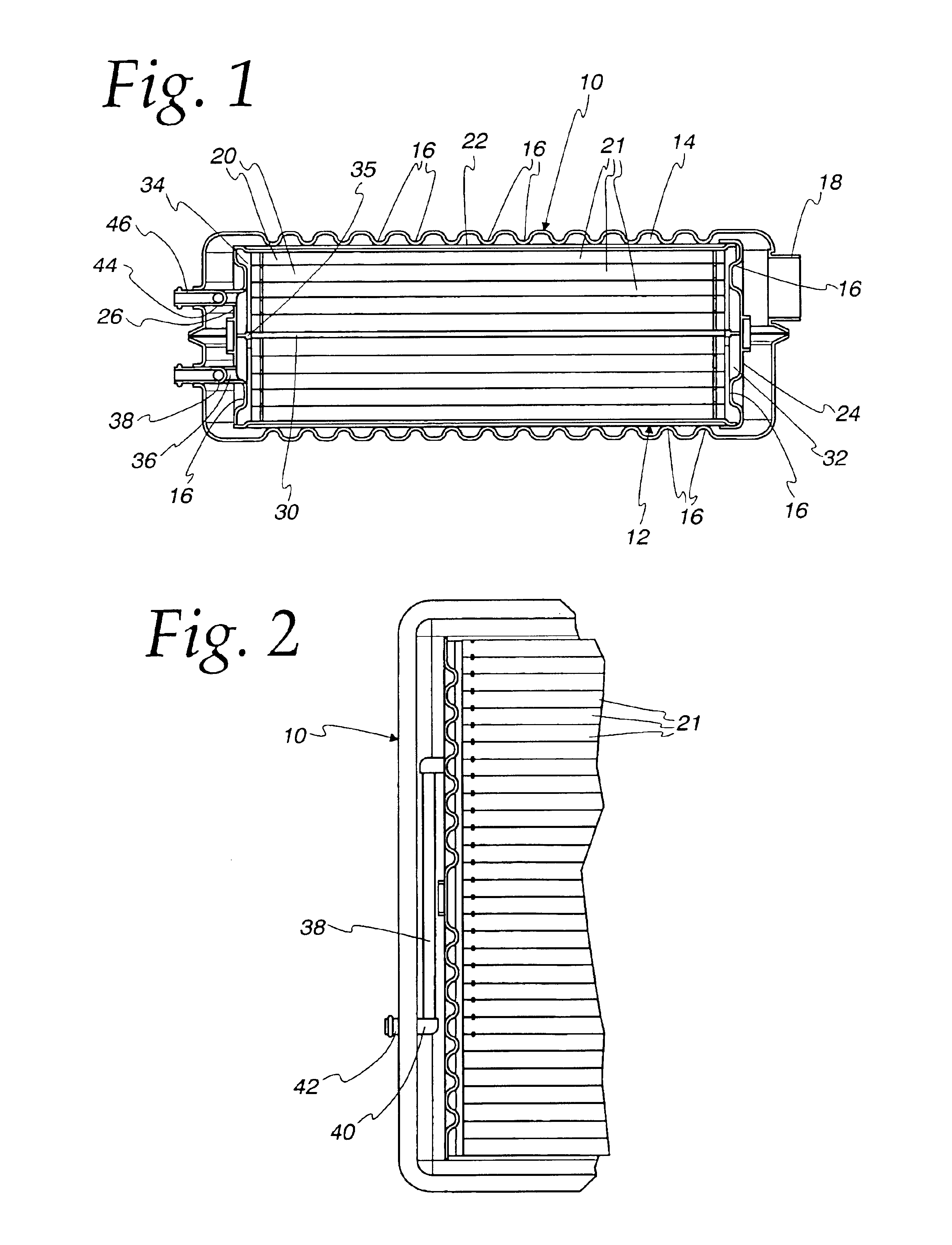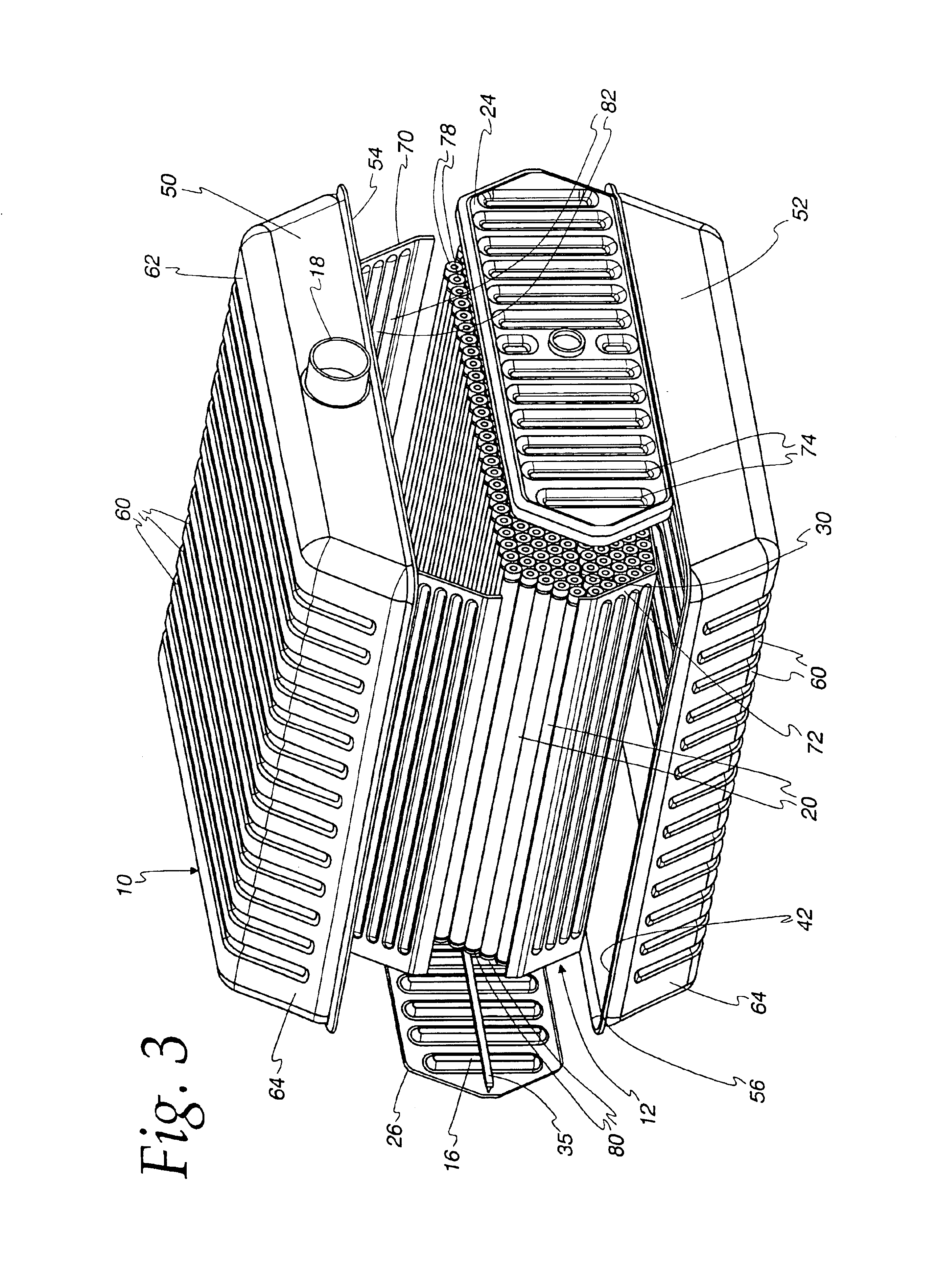Latent heat storage device
- Summary
- Abstract
- Description
- Claims
- Application Information
AI Technical Summary
Benefits of technology
Problems solved by technology
Method used
Image
Examples
Embodiment Construction
[0033]Referring to FIGS. 1 and 2, a latent heat storage device made according to the invention is illustrated. The same will be described in the context of a vehicular application but it is to be understood that except as insofar as restricted by the appended claims, the same will find application in other uses as well.
[0034]The latent heat storage device includes an outer jacket, generally designated 10, which surrounds a salt case or jacket, generally designated 12. The outer jacket 10 is optional but will be employed when the latent heat storage device is used as heat battery. It is spaced from the salt case 12 so as to define an insulating space 14. A plurality of conventional stand-offs 16 extend between the outer jacket 10 and the salt case 12 to provide the desired spacing. The stand-offs are preferably made of a material with poor thermal conductivity.
[0035]In the usual case, the space 14 will be subject to a vacuum which may be pulled through a port 18. At the same time, su...
PUM
 Login to View More
Login to View More Abstract
Description
Claims
Application Information
 Login to View More
Login to View More - R&D
- Intellectual Property
- Life Sciences
- Materials
- Tech Scout
- Unparalleled Data Quality
- Higher Quality Content
- 60% Fewer Hallucinations
Browse by: Latest US Patents, China's latest patents, Technical Efficacy Thesaurus, Application Domain, Technology Topic, Popular Technical Reports.
© 2025 PatSnap. All rights reserved.Legal|Privacy policy|Modern Slavery Act Transparency Statement|Sitemap|About US| Contact US: help@patsnap.com



